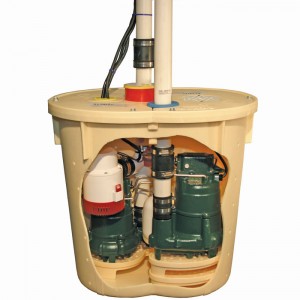 Basement sump pump help prevent the common issue of basement flooding. Choosing the right system that fits your home will save you money and costly repairs later on. Our guide has a few suggestions to keep in mind while you shop for sump pumps.
Basement sump pump help prevent the common issue of basement flooding. Choosing the right system that fits your home will save you money and costly repairs later on. Our guide has a few suggestions to keep in mind while you shop for sump pumps.
First, the amount of power you need for your sump pump will be determined by the threat of floods, and not the size of your home or basement. The best pumps on the market discharge one gallon per second, while maintaining adequate pumping capacity based on the height of your basement. So you should measure the size of your basement from floor to ceiling. The sump pump will need to be able to discharge enough water to fill the basement. While the chances of your basement flooding to the ceiling are minute, you need to be sure your pump can handle a large capacity.
Also, pump are available in a wide variety of case housings. Many customers opt for thin sheet metal type housings. While this helps out over a short period of time, thin sump pump housing are not permanent solutions. Cast iron housings are more expensive, but they will last for the lifetime of the pump. You may find plastic housings on the market, and these should only be used in areas that are at low risk for floods, or as a temporary fix.
